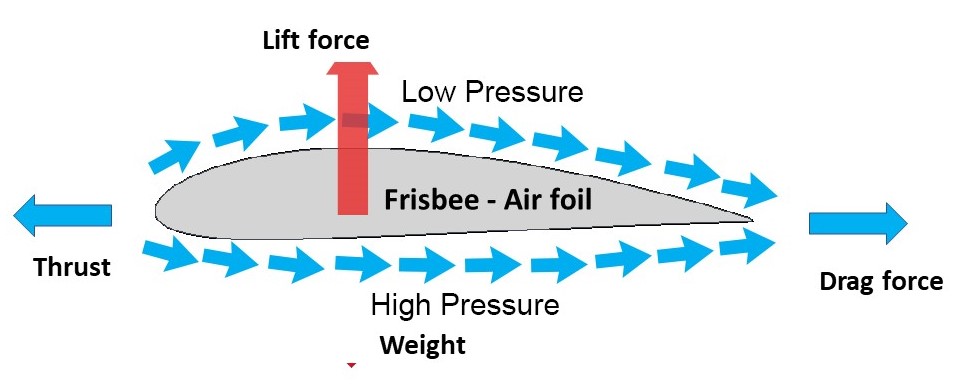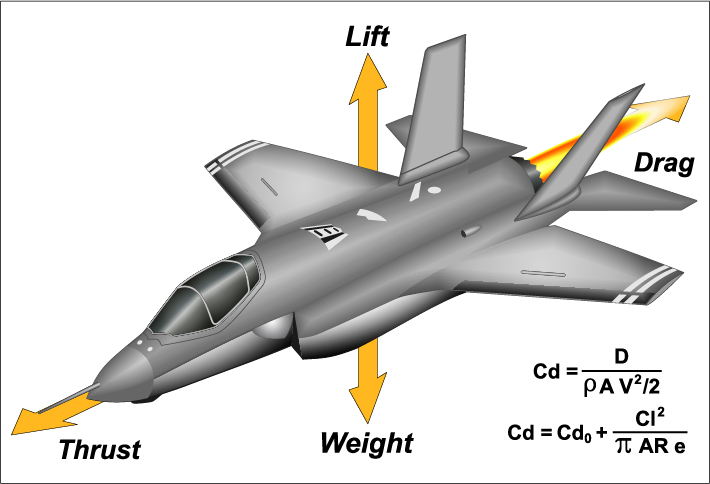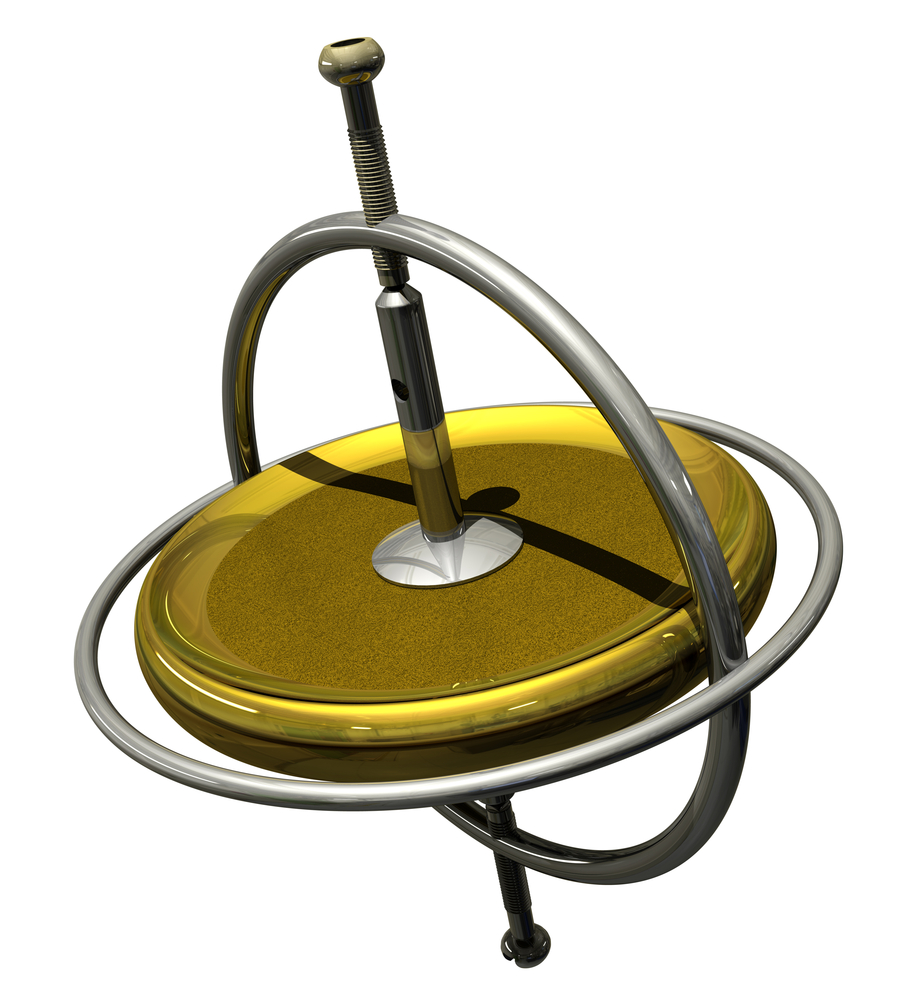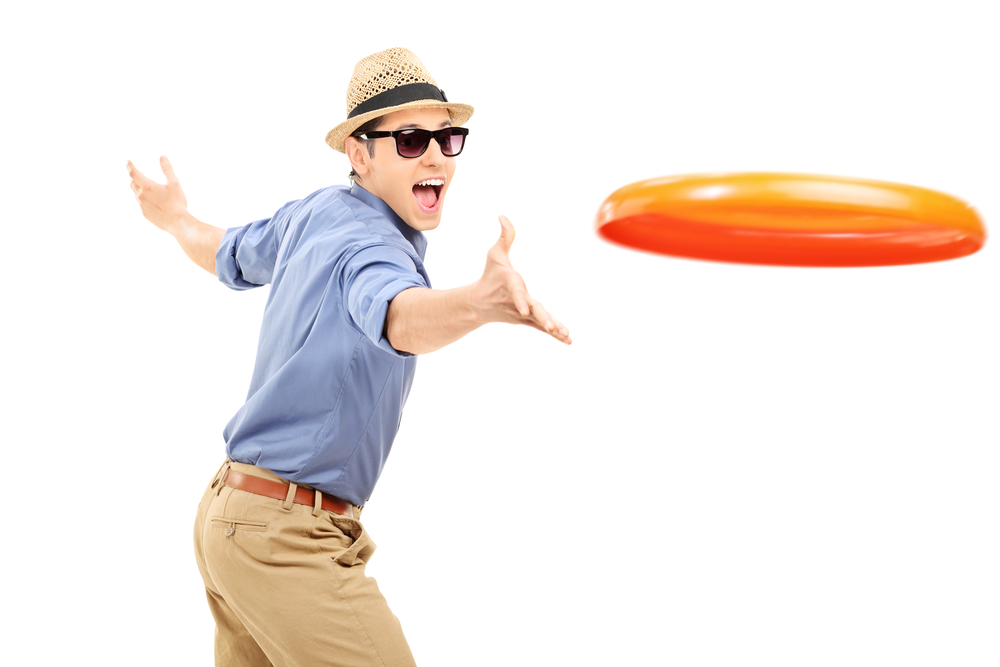Table of Contents (click to expand)
The flight of a Frisbee is determined by the lift force and the drag force. Once airborne, the spin on the disk provides the gyroscopic stability needed to hover against gravity. The biomechanics of the throwing arm determines the elegance of the flight. The perfect launch angle is achieved by the use of one arm, rather than two arms, to generate the right torque.
A day on the beach is never complete without some good frisbee time. Gliding through the air like a UFO, how do frisbees seem to defy gravity and ride the air?
Well, that all depends on your toss.
If you’ve ever played a game of frisbee, you would know that a frisbee thrown with one hand travels much farther than one thrown with both hands! Let’s try to better understand the physical mechanics involved so you get the perfect throw next time you’re slinging discs!
Structural Design Of Frisbee
Frisbee is an airfoil in a cross-sectional shape, which reduces the drag and increases the lift on the device to make it fly.
Briefly, an airfoil is any structure that manipulates its flow in a fluid, such as air or water, to generate a reaction. For example, airplanes, the body of fish, and the wings of birds are all types of airfoils.
The airfoil design helps the frisbee maneuver in a fluid (air). Also, the spin on the disk imparts gyroscopic stability for accuracy and position.

The rim on a frisbee adds curvature to the airfoil when it comes in contact with the air, creating differential pressures between the top and bottom of the disk. Most frisbees have ridges on the surface, which creates turbulence within the air stream, helping them to fly even farther.
Also Read: Why Are Aircraft Wings Curved At The End?
Mechanics Of A Frisbee
The concepts of physics that enable the gliding of the frisbee are aerodynamic lift and gyroscopic stability.
Aerodynamic Force
Two counteractive forces acting on any frisbee are the lift force and the drag force. The third factor in the successful flight of a frisbee is the launch angle.
a. The lift force is the force that opposes the weight of the frisbee and holds the disk in the air. Due to the curvature of the frisbee, the velocity of the air is higher on the upper surface and lower on the bottom surface.
Bernoulli’s Principle states that when the velocity of a fluid increases, its pressure decreases.
Thus, the top of the disk experiences lower pressure, while the bottom experiences higher pressure. This differential pressure provides lift to the disk.

b. The drag force is a resistive force caused by the interaction of a solid body with a fluid, such as a liquid or gas. It acts perpendicular to the lift force and slows the disk’s movement in the air.
c. Launch angle: The angle at which the frisbee is thrown will affect lift, drag, and turbulence.
2. Gyroscopic Stability
The rotation of the frisbee is critical for its flight. Without any spin, a frisbee would just flutter to the ground. The faster the body spins, the greater its angular velocity, which stabilizes the body in that particular position.

Also Read: The Science Of Flying A Kite
The Flight Of The Frisbee Is In The Hand That Chucks It
The flight of the frisbee rests on the wrist. A good flick of the wrist supplies the necessary lift force, spin, and turbulence to the disc so that it can fly straight and far.
What Is Torque?
Torque is equivalent to force, but moves on a rotational axis. We throw a frisbee on a rotational axis, not on a linear axis. To supply the force applied from the forearm holding the frisbee, the elbow is used at the rotational axis. During this process, the force being exerted is converted into torque.
Torque = Force x Length
Biomechanics Of A Throw
The mechanics of the human body provide velocity to a frisbee through torque, not through linear force. High velocities are created by pivoting the body at an anchor point to create high rotational acceleration.
One Hand Is Better Than Two

There are many advantages to a single-hand throw of a frisbee:
- The higher the momentum of the throw, the greater the distance travelled by the frisbee. The human body provides the fastest velocities through torque, rather than linear force. For higher torque, the body must pivot to an anchor point. The effective use of one’s entire body strength can be achieved by a one-handed throw, as it generates higher torque, resulting in greater rotational acceleration. All these factors suggest the use of one hand when throwing a frisbee.
- When we throw a frisbee with two hands, the resultant force on the frisbee is less than the force applied when we throw with just one hand!
Also Read: How Does A Boomerang Come Back?
Wingspan Adds To Torque
Wingspan is the length from one end to the other of an individual’s arms parallel to the ground at at a 90° angle to shoulder height. Wingspan plays a major role in all sports, from baseball and cricket to frisbee and darts.
When we throw a frisbee with one hand, the torque is higher because of the bigger wingspan. The greater the torque, the higher the angular acceleration. When you use two hands, however, your wingspan is reduced, so torque is reduced.
For example, if two players with different arm lengths throw a frisbee with the same force, the one with the longer arm will produce more torque and more angular acceleration, and will therefore achieve more distance.
Conclusion
A Frisbee is an airfoil that behaves similar to an aircraft. The design of the disk, aerodynamic force, and the gyroscopic force all drive the frisbee to combat gravity. The launch angle is also critical to the flight of the frisbee. The disk can glide a long distance when thrown with one hand, rather than with both hands. The torque generated depends on the person’s wingspan, which is greater when the disk is thrown with one arm, rather than with both arms. So, next time you suggest a game of frisbee with your friends, just remember the quantum of physics involved in the sport!
How well do you understand the article above!

